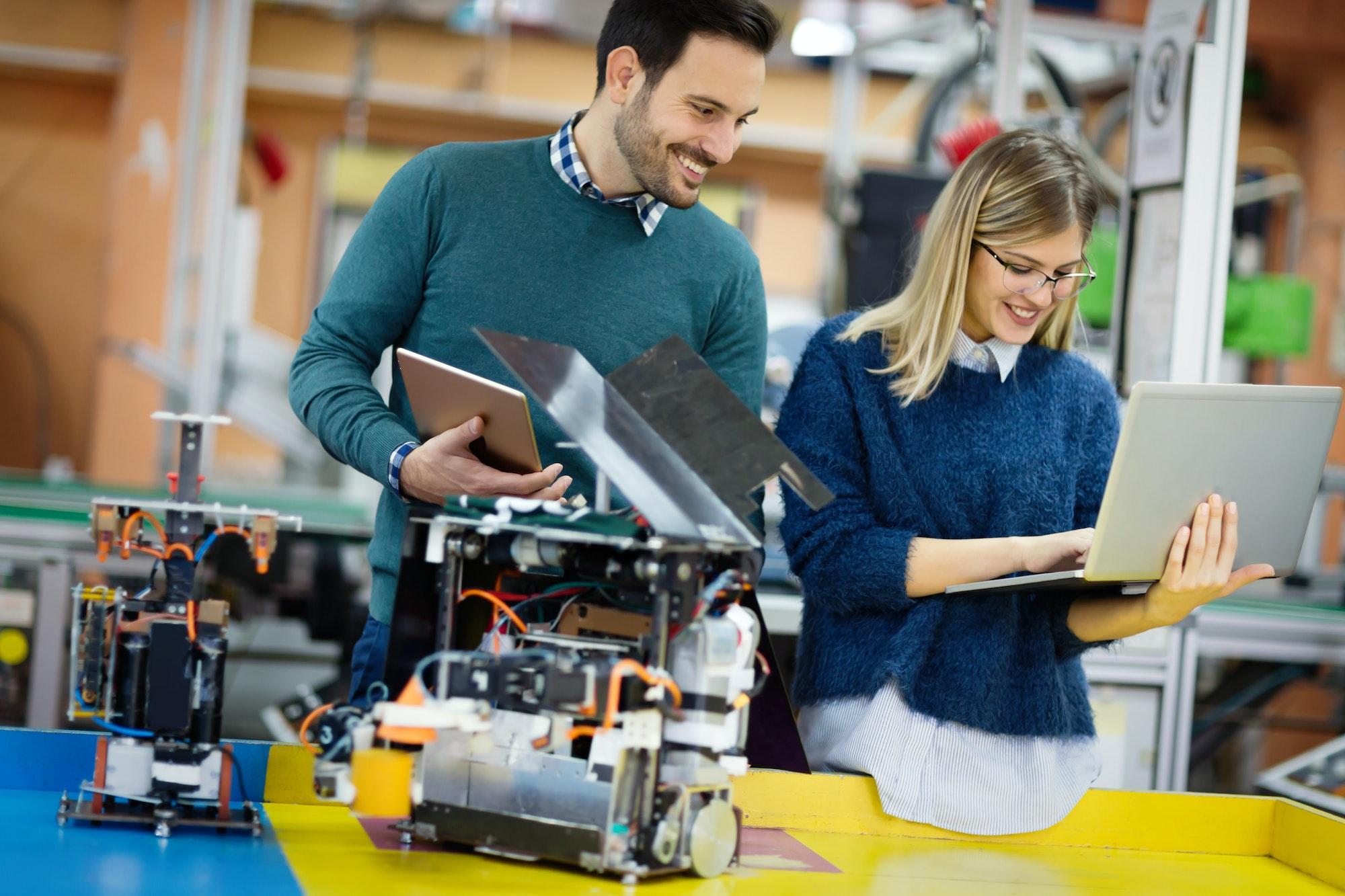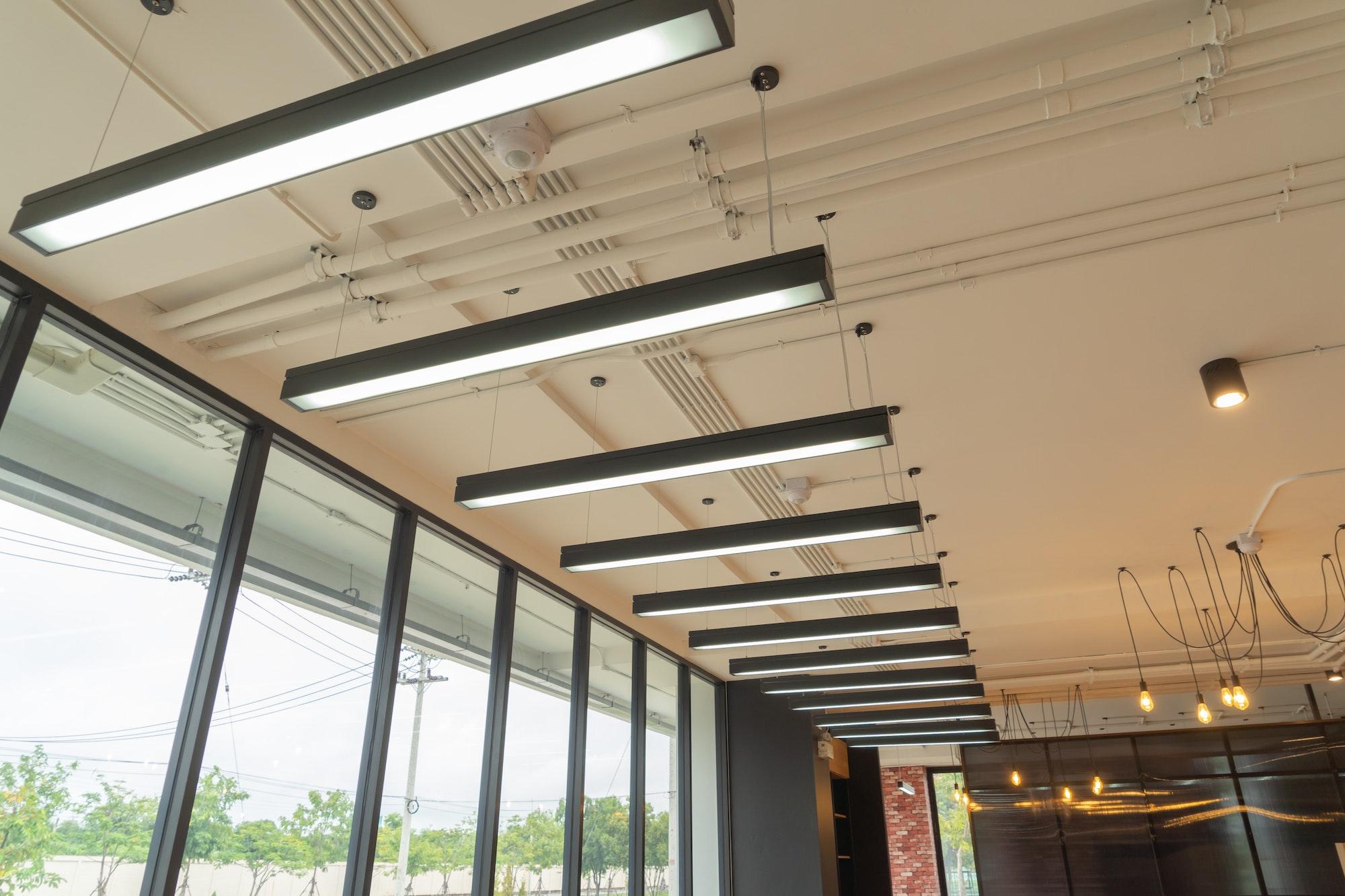
Are you ready to dive into the exciting world of robotics startups?
From manufacturing to healthcare, these innovative companies are harnessing cutting-edge technologies to create a future that once seemed like science fiction.
In this article, we’ll explore the dynamic landscape of robotics startups and how they’re revolutionizing various industries.
So, grab your virtual hard hat as we embark on a journey through the trends and emerging technologies that are shaping the robotics startup ecosystem.
1. Understanding the Rise of Robotics Startups
In recent years, the realm of robotics has seen an unprecedented surge in startups. These agile and daring enterprises are sprouting up like mushrooms after a spring rain.
What’s Driving this Phenomenon?
The answer lies in the convergence of technological advancements, increased accessibility to resources, and a growing demand for automation solutions across industries.
As traditional industries seek ways to optimize processes, reduce costs, and enhance efficiency, robotics startups have become the torchbearers of innovation.
They’re not just building robots; they’re also crafting intelligent machines capable of learning, adapting, and making autonomous decisions.
This transformative shift is sending ripples through sectors that range from agriculture and logistics to medicine and entertainment.
Robotics Startup Landscape in Numbers
| Landscape | Value |
|---|---|
| Number of Robotics Startups Worldwide (2022) | 2,865 |
| Total Funding Raised by Robotics Startups (2022) | $9.9 billion |
| Expected Annual Growth Rate of the Market | 24.5% |
| Percentage of Startups Focused on Industrial Robotics | 37% |
| Robotics Patents Filed Globally (2021) | 69,515 |
| Average Age of Founders in Robotics Startups | 32 years |
| Robotic Process Automation Market Size (2022) | $2.9 billion |
| Healthcare Robotics Market Size (2022) | $7.2 billion |
2. The Trends of Robotics Startups
Trend 1: Collaborative Robots for Pioneering Human-Robot Partnerships
One of the most captivating trends in the realm of robotics startups is the rise of collaborative robots, often referred to as cobots.
Unlike their heavy, industrial counterparts, cobots are designed to work alongside humans, augmenting their capabilities and creating harmonious work environments. These machines are not here to replace us; they’re here to collaborate.
Therefore, cobots are finding their place on factory floors, assisting workers in assembling intricate components and handling repetitive tasks.
They’re the digital dance partners of surgeons, enhancing precision in delicate medical procedures.
With safety features like force sensors and advanced computer vision, cobots are becoming trusted teammates, amplifying human potential and efficiency.
Trend 2: AI and Machine Learning That Represent The Brains Behind the Bots
Step into the workshop of a robotics startup, and you’ll likely find a symphony of algorithms at work. Artificial Intelligence (AI) and Machine Learning (ML) are the driving forces behind the intelligence of modern robots.
These technologies empower robots to analyze data, learn from experiences, and make informed decisions in real time.
Imagine a robot that can navigate a cluttered room without bumping into objects thanks to its ability to recognize and adapt to new surroundings. Imagine a delivery robot that learns the most efficient routes by processing traffic patterns and adjusting its itinerary on the fly.
AI and ML are making these scenarios not just possible but practical for robotics startups.
Trend 3: Precision Agriculture for Cultivating the Future
In the heart of the agriculture industry, robotics startups are sowing the seeds of change. Precision agriculture is the buzzword, and it involves deploying robots to monitor crops, analyze soil conditions, and even perform targeted pesticide applications.
Indeed, these robotic farmers are revolutionizing traditional farming practices by offering unprecedented levels of precision and efficiency.
Imagine a fleet of drones soaring over vast fields, capturing data that informs farmers about crop health and irrigation needs.
Think of robotic harvesters that can pluck delicate fruits with the same care as a human hand.
Indeed, the marriage of robotics, AI, and agriculture is ushering in an era where every acre of land is tended to with surgical precision.
Trend 4: Medical Marvels and Robotic Healthcare Assistants
In the realm of healthcare, robotics startups are scripting a new narrative. Imagine a scenario where surgeries are conducted with unparalleled precision, where diagnostics are made swiftly and accurately, and where patients are cared for by robots with empathy and precision.
This isn’t a distant dream; it’s the future being crafted by medical robotics startups.
Robotic surgical assistants are enhancing the capabilities of medical professionals by offering steadier hands and enhanced visualization.
Telemedicine robots are breaking down geographical barriers, bringing medical expertise to remote locations.
The merging of robotics and healthcare isn’t just improving patient outcomes; it’s rewriting the rules of what’s possible.
Trend 5: Entertainment Evolved: Robots in the Limelight
Beyond the realms of industry and healthcare, robotics startups are stepping onto the grand stage of entertainment.
These innovative companies are redefining live performances, gaming experiences, and even theme park adventures.
Imagine a robot conducting a symphony orchestra flawlessly, pouring soul into every note.
Imagine a theme park where robotic characters blur the lines between fantasy and reality.
These startups are using robotics to create immersive experiences that leave audiences in awe.
With technologies like facial recognition and natural language processing, robots are evolving from mere machines to captivating performers that evoke genuine emotions.
3. Robotics Startups Across Industries
As we explore the dynamic landscape of robotics startups, it’s fascinating to delve into the diverse industries that are being transformed by innovation.
This table sheds light on how robotics startups are making an impact in various sectors, showcasing their versatility and the range of challenges they address.
From healthcare to agriculture, let’s take a closer look at the cross-industry influence of robotics startups:
| Industry | Robotics Startup Solution | Impact and Benefits |
|---|---|---|
| Construction | Autonomous Construction Robots | Streamlining labor-intensive tasks, enhances efficiency. |
| Education | Robot-Assisted Learning Tools | Engaging students with interactive and personalized learning. |
| Energy | Inspection Drones | Enabling safer and more efficient inspection of power assets. |
| Retail | Inventory Management Robots | Optimizing inventory tracking and restocking in retail stores. |
| Hospitality | Service Robots | Enhancing guest experiences with efficient service delivery. |
| Finance | Robo-Advisors | Providing automated financial advice and investment strategies. |
| Entertainment | Robotic Performers | Adding a futuristic touch to entertainment shows and events. |
4. Navigating Funding Challenges: A Crucial Expedition for Robotics Startups
In the dynamic landscape of robotics startups, innovation is fueled by creativity, but it also requires a substantial infusion of capital.
Therefore, navigating the intricate web of funding challenges is a rite of passage for these ventures.
Let’s delve into how robotics startups are charting their course through the realm of funding, overcoming obstacles, and securing the resources they need to bring their visions to life.
The Funding Puzzle
Securing funding is a complex puzzle, and startups must align the pieces perfectly to attract investors.
With robotics being a capital-intensive field, startups often require significant funds for research, development, prototyping, and market entry.
Navigating this terrain demands a strategic approach that balances vision with financial viability.
Venture Capital: The Lifeline of Innovation
Venture capital (VC) has emerged as a lifeline for robotics startups, providing the necessary injection of funds to turn concepts into prototypes and prototypes into products.
Indeed, VC firms recognize the potential of these ventures to disrupt industries and drive technological evolution.
Startups pitch their ideas, showcasing not only the novelty of their solutions but also the market demand they intend to fulfill.
Bootstrapping: Nurturing Independence
While VC funding is a common route, some startups opt for bootstrapping as a path to self-reliance.
Bootstrapping allows founders to maintain control over their vision without external influence.
Though challenging, it can foster creativity and resourcefulness, pushing startups to innovate within constraints and ultimately attracting investors who appreciate their tenacity.
Government Grants and Subsidies: Catalyzing Innovation
Governments around the world recognize the significance of robotics startups in driving economic growth. As a result, they offer grants, subsidies, and incentives to fuel innovation.
These funding sources not only provide financial support but also validate startups’ technological approaches, making them more attractive to private investors.
Angel Investors: Navigating Uncharted Waters
Angel investors, often successful entrepreneurs themselves, are drawn to the potential of robotics startups.
Their investments come with not only financial backing but also mentorship and strategic guidance.
Navigating these uncharted waters requires startups to present a compelling case for their solution’s scalability and impact.
Crowdfunding: Harnessing Community Support
In the age of digital connectivity, crowdfunding platforms have emerged as powerful tools for robotics startups.
These platforms allow startups to present their concepts directly to potential customers and supporters, harnessing community support to fund their projects.
The success of a crowdfunding campaign not only injects funds but also serves as a testament to the idea’s market appeal.
Partnerships and Collaborations: Synergizing Resources
Collaborations with established companies can provide startups with access to resources, expertise, and distribution channels.
These partnerships can also include joint ventures, licensing agreements, or strategic alliances.
Indeed, such collaborations validate startups’ technology and provide them with the necessary backing to navigate the competitive landscape.
5. Robotics Startups: Funding Avenues and Strategies
In the journey of robotics startups, securing funding is a crucial step that requires strategic planning and creative approaches.
This table provides insight into the diverse funding avenues and strategies that startups in the robotics industry are utilizing to bring their innovations to life:
| Funding Avenue | Description | Advantages |
|---|---|---|
| Venture Capital | Private investment firms provide capital in exchange for equity. | Access to expertise, mentorship, and networks. |
| Crowdfunding | Startups raise funds from a large number of individuals online. | Engage with a community and validate demand. |
| Government Grants | Financial support is provided by governments to promote innovation. | Non-dilutive funding, validation of technology. |
| Angel Investors | High-net-worth individuals invest in startups for equity. | Personalized mentorship and strategic guidance. |
| Corporate Partnerships | Collaboration with established companies for shared resources. | Access to distribution channels and expertise. |
By leveraging a mix of funding avenues, startups are not only securing the necessary resources but also gaining access to valuable insights and networks that drive their success.
FAQs: Answers to Common Questions About Robotics Startups
What Role Does Ethical Consideration Play in Robotics Startups?
Ethical considerations hold significant importance in the realm of robotics startups. As these ventures introduce innovative technologies into various industries, questions arise about how these technologies will impact society, privacy, and employment. Startups must proactively address potential ethical challenges, ensuring that their robots are designed and programmed to adhere to ethical standards. For instance, a robotics startup developing AI-powered healthcare robots should prioritize patient data privacy and transparent decision-making algorithms.
How Do Robotics Startups Contribute to Sustainability?
Robotics startups are playing a pivotal role in promoting sustainability across industries. Therefore, by developing robots that streamline processes, reduce waste, and optimize resource utilization, these startups are making significant contributions to environmental conservation. For instance, in agriculture, robotics startups are creating autonomous robots that precisely target pesticide application, minimizing chemical use and environmental impact while ensuring crop health.
Are There Challenges in Intellectual Property for Robotics Startups?
Intellectual property (IP) challenges are indeed a concern for robotics startups. Protecting their unique technological innovations is crucial for maintaining a competitive edge. However, navigating the complex landscape of patents and copyrights can be daunting. To address this, startups should work closely with legal experts specializing in IP for technology. This might involve a combination of patent filings, trade secret protection, and agreements with employees and collaborators.
How Do Robotics Startups Foster Diversity in a Male-Dominated Field?
Diversity and inclusion are gaining traction in the robotics startup arena. While the field has historically been male-dominated, startups are increasingly recognizing the value of diverse perspectives. Initiatives such as mentorship programs, scholarship opportunities, and networking events are being introduced to encourage women and underrepresented groups to enter and thrive in the robotics industry. The infusion of diverse voices brings fresh ideas and enriches innovation.
What Are the Global Opportunities for Robotics Startups?
Robotics startups have a world of opportunities at their fingertips. As industries across the globe seek automation and efficiency solutions, startups can tap into international markets. For example, a robotics startup specializing in warehouse automation could find customers in booming e-commerce markets like Asia and Europe. Indeed, strategic partnerships and international expos can help startups expand their reach and establish a global presence.
Conclusion
In the ever-evolving landscape of technology, robotics startups are the torchbearers of innovation, setting the stage for a future that once seemed like a distant dream.
As collaborative robots dance with humans, AI and ML orchestrate intelligent decisions, and robots till the fields of precision agriculture, we witness the birth of a new era.
Through the lens of healthcare and entertainment, these startups remind us that the boundaries of human achievement are constantly expanding.
So, whether you’re intrigued by the hum of machinery on a factory floor, the precision of a surgical robot’s touch, or the magic of a robotic performer, one thing is certain: robotics startups are shaping a world where the impossible is just another challenge waiting to be conquered.








































